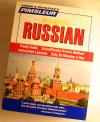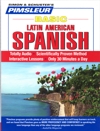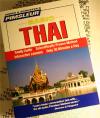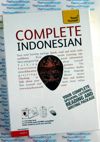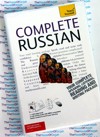Teach Yourself Complete Serbian - 2 Audio CDs and Book - Learn to speak Serbian
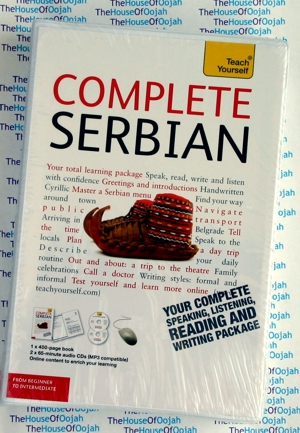
Teach Yourself Complete Serbian2 Audio CDs and Book CD(many other sellers only sell the book without the CDs) Get Other Teach Yourself Language Learning Audio Books click here |
 |
Teach Yourself Complete Serbian - 2 Audio CDs and Book2 CDs and Book Are you looking for a complete course in Serbian which takes you effortlessly from beginner to confident speaker? Whether you are starting from scratch, or are just out of practice, Complete Serbian will guarantee success! Now fully updated to make your language learning experience fun and interactive. You can still rely on the benefits of a top language teacher and our years of teaching experience, but now with added learning features within the course and online. The course is structured in thematic units and the emphasis is placed on communication, so that you effortlessly progress from introducing yourself and dealing with everyday situations, to using the phone and talking about work. By the end of this course, you will be at Level B2 of the Common European Framework for Languages: Can interact with a degree of fluency and spontaneity that makes regular interaction with native speakers quite possible without strain for either party. Learn effortlessly with a new easy-to-read page design and interactive features: NOT GOT MUCH TIME? AUTHOR INSIGHTS GRAMMAR TIPS USEFUL VOCABULARY DIALOGUES PRONUNCIATION TEST YOURSELF EXTEND YOUR KNOWLEDGE TRY THIS The first widely available title covering Serbian only Table of Contents: About the Author: About the Serbian LanguageThe Serbian language is a South Slavic language, spoken chiefly in Serbia, Bosnia and Herzegovina, Montenegro, Croatia, and in the Serbian diaspora. Standard Serbian is based on Shtokavian dialect, like modern Croatian and Bosnian (formerly known as Serbo-Croatian), with which it is mutually intelligible, and was previously unified with under the standard known as Serbo-Croatian. It counts among official (and minority) languages of Serbia, Bosnia and Herzegovina, Montenegro, Croatia, Romania, Republic of Macedonia and Hungary. Two alphabets are used to write Serbian: a variation on the Cyrillic alphabet, devised by Vuk Stefanović Karadžić, and a variation on the Latin alphabet, devised by Ljudevit Gaj. Serbian orthography is very consistent: approximation of the principle "one letter per sound". This principle is represented by Adelung's saying, "Write as you speak and read as it is written", the principle used by Vuk Karadžić when reforming the Cyrillic orthography of Serbian in the 19th century. Serbian can be written in two different alphabets: Serbian Cyrillic script (ћирилица) and the Serbian Latin (latinica). Both were promoted in Yugoslavia. The Cyrillic script is Serbia's official under the 2006 Constitution of Serbia, but the Latin alphabet is equally used with the Cyrillic alphabet in Serbian language, according to the Serbian orthography. The Latin alphabet was first officially used in the Kingdom of Serbs, Croats and Slovenes (later Kingdom of Yugoslavia). Also, among others, a famous Serbian literary historian and critic Jovan Skerlić proposed abandoning the Cyrillic script and accepting Latin as the only alphabet. Before 1400, most Serbian vernaculars had two accents, both with fall intonation—the short one and the long one. That is why they are called "old accents". By 1500, the old accents moved by one syllable towards the beginning of the word, changing their quality to rising accents. For instance junâk (hero) became jùnāk. The old accents, logically remained only when they were on first syllable. Not all dialects had that evolution; those who had it are called neo-shtokavian. The irradiation point was in east Herzegovina, between Prokletije mountains and town of Trebinje. Since the 1500s people had been emigrating from this area. The biggest migrations were to the north, then toward Military Krajina and to the seaside (Dalmatia, Istria, Dubrovnik area, including islands of Mljet and Šipan). In 1920s and 1930s royal government tried to settle people from this poor mountainous area to Kosovo basin. Vojvodina was settled with inhabitants from this area after WWII. When all old accents had moved to the beginning of the word for one syllable, this was the result: * In words with two or more syllables the last syllable cannot be stressed |
Teach Yourself Complete Serbian - 2 Audio CDs and Book |

 0 Items (Empty)
0 Items (Empty)
